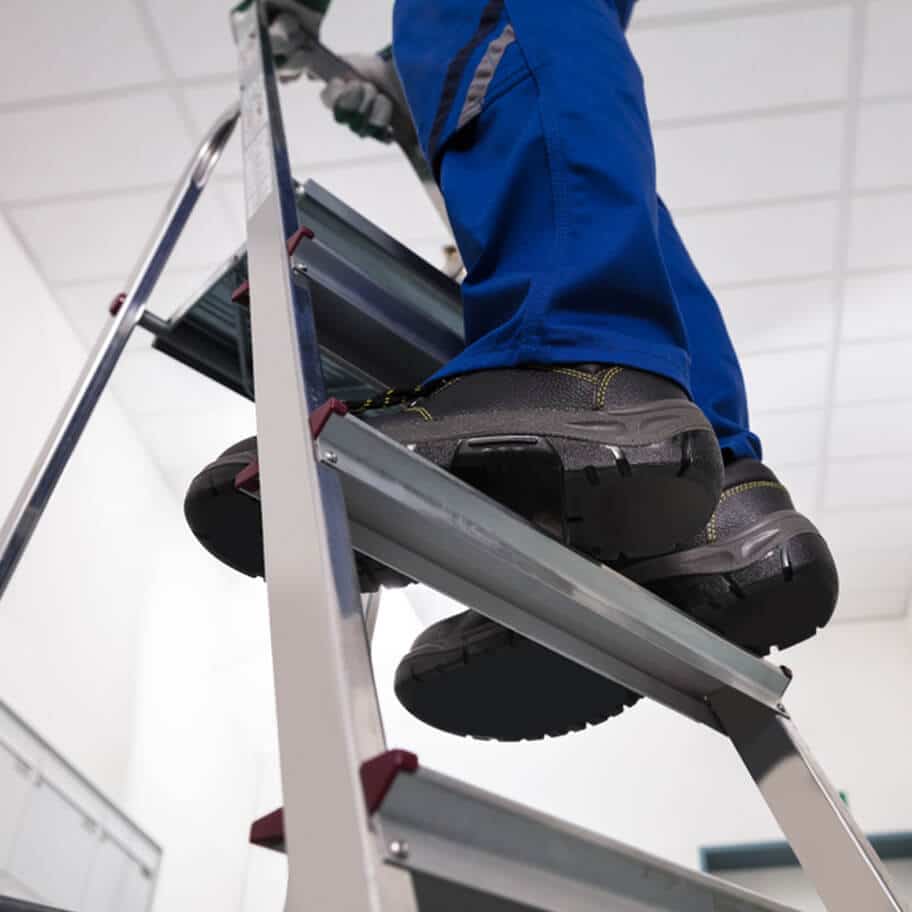Employer Duties
Employers have a legal responsibility to implement certain rules in the workplace. It is up to the workers to follow these instructions as it is for their own safety and interest that they do. Some of these obligations consist of:
- Must ensure that regulations are in place to prevent falls for those working at a height.
- Must provide the necessary training for all aspects of a work site.
- The employer should do everything possible to prevent falls.
- An employer should erect adequate scaffolding under the proper supervision.
- Employees should be protected from falling objects and ensure that equipment is properly and safely secured on the work site.
Common Injuries
Common injuries sustained in ladder accident claims have included:
Causes
There are recurring themes regarding ladder injuries which are often preventable. Employers have a legal duty to train their staff to use ladders appropriately and always putting their safety first. Some of the most common causes of ladder accidents:
Overreaching
Overreaching accidents are the most common cause of ladder accidents. Often the injured party climbs up too many steps while holding an object and over stretches while attempting to complete the task at hand, causing them to lose their balance and the ladder to sway and collapse.
Not Securely Into to the Ground
It is critical to your safety that the ladder is secure and in a stable condition on the ground. Ladders can be set up on an uneven surface which then causes it to tilt and fall when the person is at the top.
Loose Grip on Work Boots
Oil spills, wetness or worn out shoes can contribute to a ladder accident. Before using a ladder, it is advisable to check your footwear is suitable for the height you’re working at. Wearing inadequate footwear can lead to an accident.
Inadequate Training
It is the duty of the employer to provide training on any equipment the employees use. No task should be carried out if you have not been instructed how to operate the tool. It is worth noting that it is also up to the employee to appropriately use the training they have been provided with.
What to do after an accident at work*?
Following an accident at work, there are a number of steps you should follow:
-
Seek medical attention
Your health is your wealth and should be your first priority. Immediately after an accident at work, take a second to assess yourself to determine if you have any injuries and seek the relevant medical attention. If you have sustained a serious injury ensure that you contact an ambulance to attend the scene.
For minor injuries, you must remember that minor injuries where you ‘feel fine’ could progress to more serious injuries in the future. In this case it is always better to be safe than sorry and advisable that you go to your nearest accident and emergency (A&E) or local GP to be checked out.
-
Report the accident
It is critical to report the accident to your superior, i.e. a supervisor or manager on site. It doesn’t matter how small you think the accident may be. By law, accidents at work are required to be reported if the person is injured and can’t perform their daily work tasks for more than three days. Make sure to fill out an Accident Report Form. This can be used for reference in any medical examination and will also prevent any similar accidents from happening in the future.
-
Identify any witnesses
If possible, try to collect the contact details of anybody that witnessed your accident. This may be of use if you do decide to pursue a workplace accident claim. It is also useful to find out if there is any CCTV in the area where your accident happened.
-
Document the incident
It is important that you collect all the relevant information in connection with your accident:
- How the accident happened
- Details of any witnesses
- If there are any CCTV recordings of your accident
- Take pictures of where the accident happened and what caused your accident
-
Speak to a workplace accident solicitor
If you are considering moving forward with a workplace accident claim for any personal injuries sustained, it is advisable that you speak with a workplace accident claims solicitor as soon as possible. If you are proceeding with a claim, the first step will be submitting your claim to the Personal Injuries Assessment Board (PIAB) for assessment. A workplace accident solicitor can help you in preparing your application to the Personal Injuries Assessment Board (PIAB) and ensure that you follow the process in the correct format, meaning that you can move forward with your claim quickly without unnecessary delays.
It is important to remember to keep copies of any expenses that you have incurred as a result of the accident. It is also imperative to retain copies of medical reports or incident report forms where possible as you will need them when making a claim.

